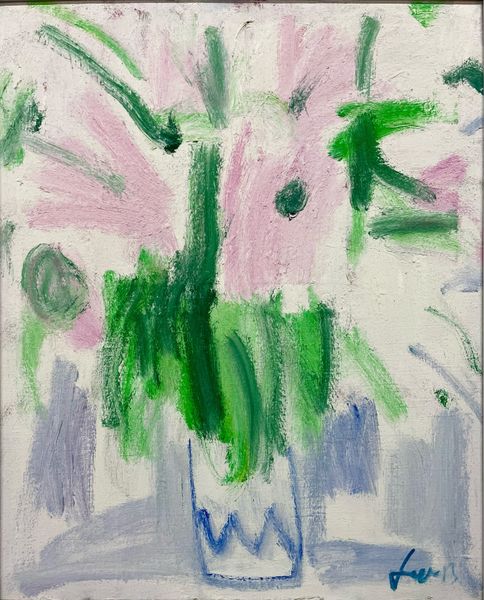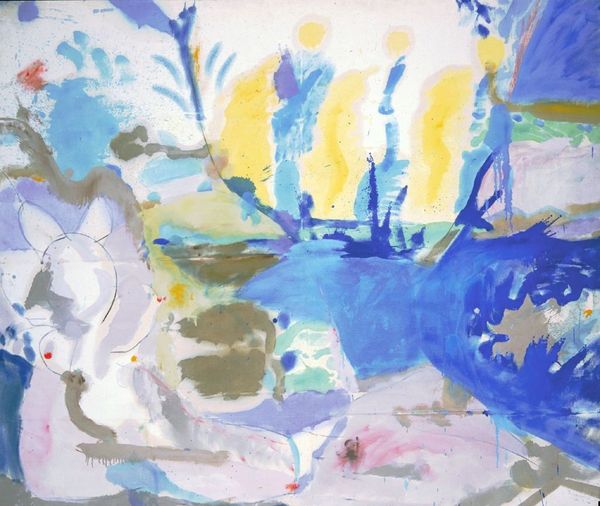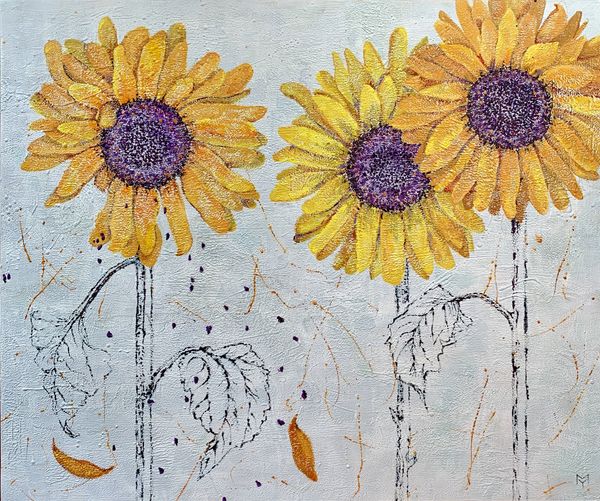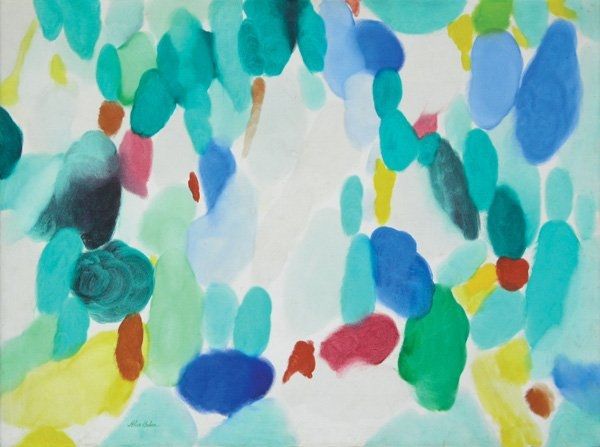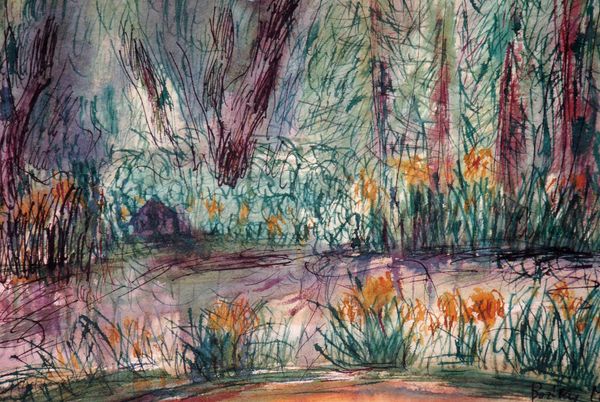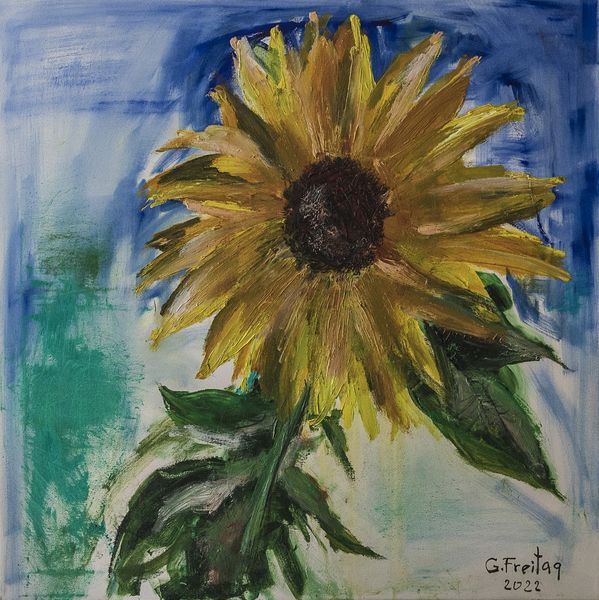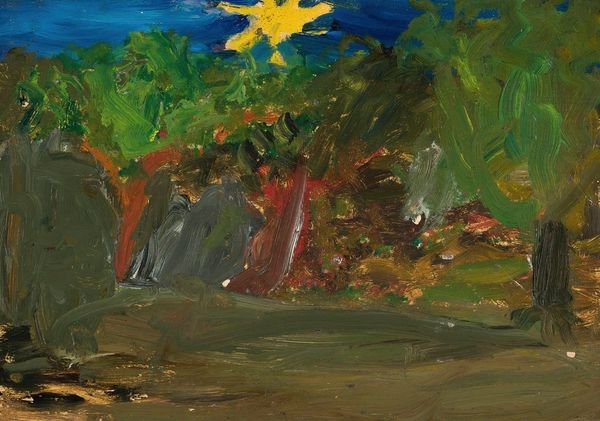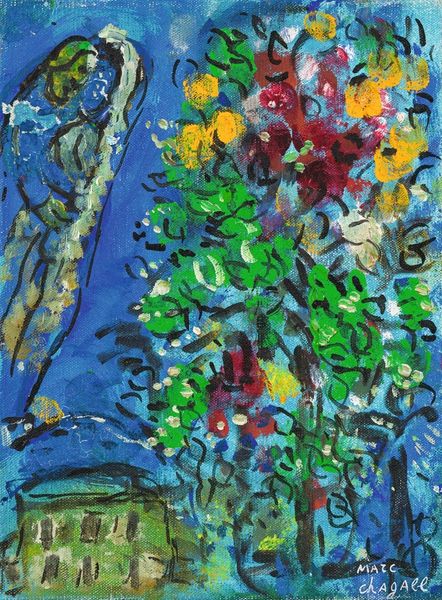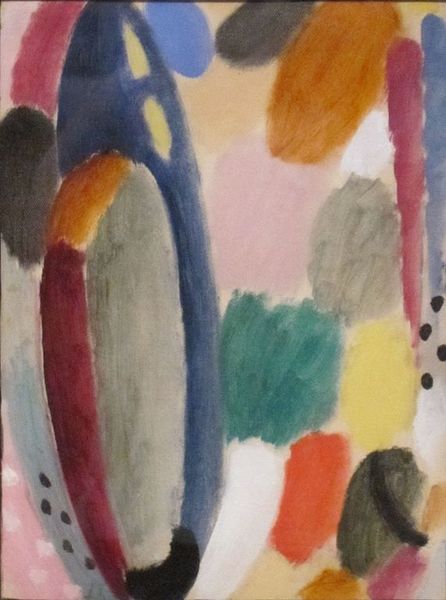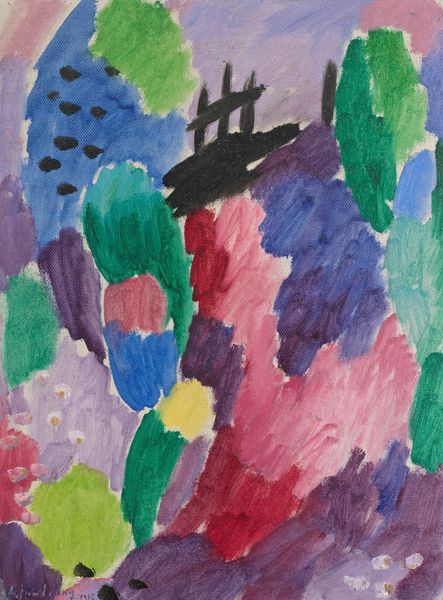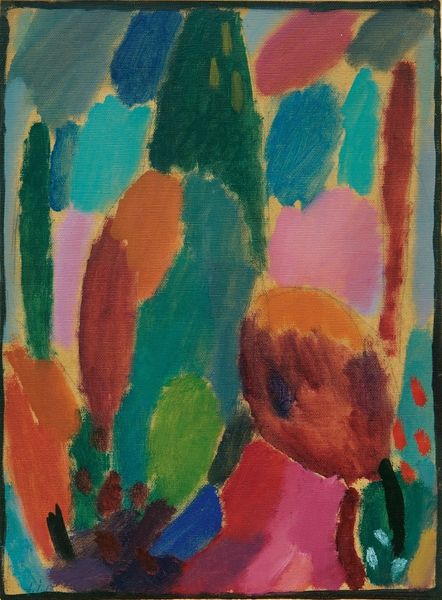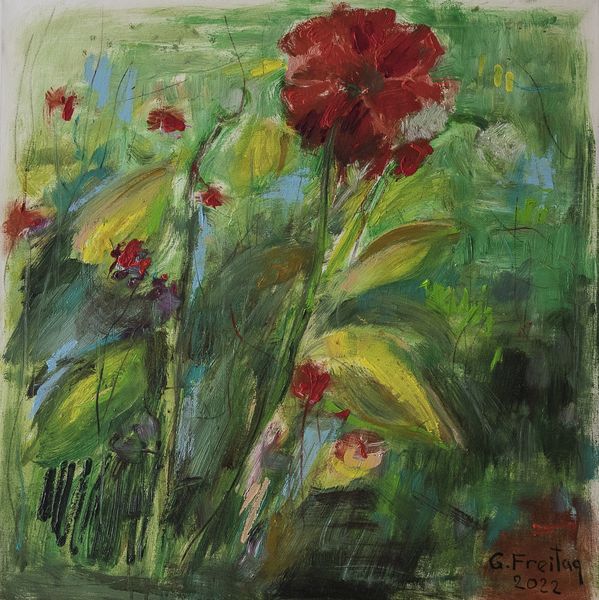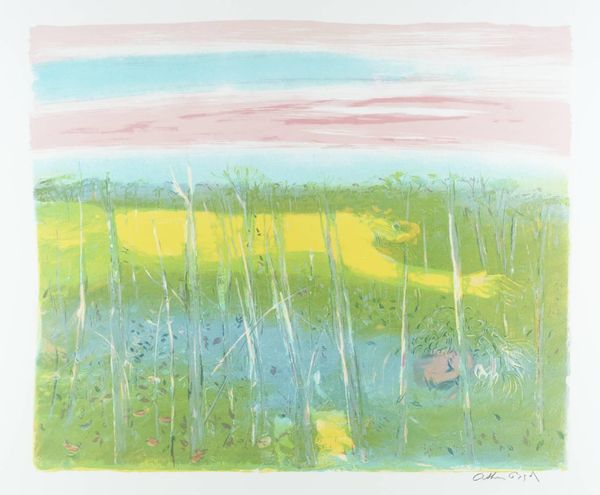
Copyright: Bernadette Resha,Fair Use
Curator: Well, what’s your first reaction to this work, called “Early Spring” by Bernadette Resha, completed in 2014 using watercolor and impasto? Editor: It's charming, in a deliberately naive way. It has the vibrant hopefulness implied by the title. I get a sense of… anticipation? As though the world is freshly painted. Curator: The simplicity is striking. Resha seems to be deliberately tapping into archetypal symbols—the simplified flowers, the palm tree shape... What sort of memory do they conjure for you? Editor: Childlike associations come to mind; it's the kind of image that reminds me of children's book illustrations from the mid-20th century. I'm curious about this "naivety," whether it's a style, an effect, or perhaps a political statement. Does Resha reflect, do you think, an art world where technical polish is sometimes deliberately abandoned? Curator: Perhaps, but I also think it reflects a deeper current. Consider the persistent use of floral imagery throughout history, often linked to feminine ideals and cycles of renewal. Even the impasto technique—the thickness of the paint itself—evokes growth and tangible energy. Are there elements you read differently? Editor: The composition seems almost spatially ambiguous; it avoids easy categorization. I agree the floral symbolism ties to established feminine themes but the “raining” tear drops almost make it less accessible. Is it joy or impending doom? It certainly provokes questions regarding where Resha sits relative to current socio-political structures of meaning-making. Curator: True. Perhaps Resha intentionally introduces dissonance. The "raining tear drops" you point out could symbolize vulnerability amidst beauty. What role do museums and other art institutions play, and how can they help recontextualize pieces of our history for contemporary audiences? Editor: They shoulder a heavy responsibility to encourage multifaceted discourse; in that vein, pieces such as these encourage new dialogue and can reflect where the museum, as an institution, fits into the evolution. Curator: Agreed. This has offered fascinating new perspectives to me on the intersection of personal expression and societal forces in visual culture. Thank you. Editor: My pleasure. I'll carry this fresh lens and new questions with me as well.
Comments
No comments
Be the first to comment and join the conversation on the ultimate creative platform.
